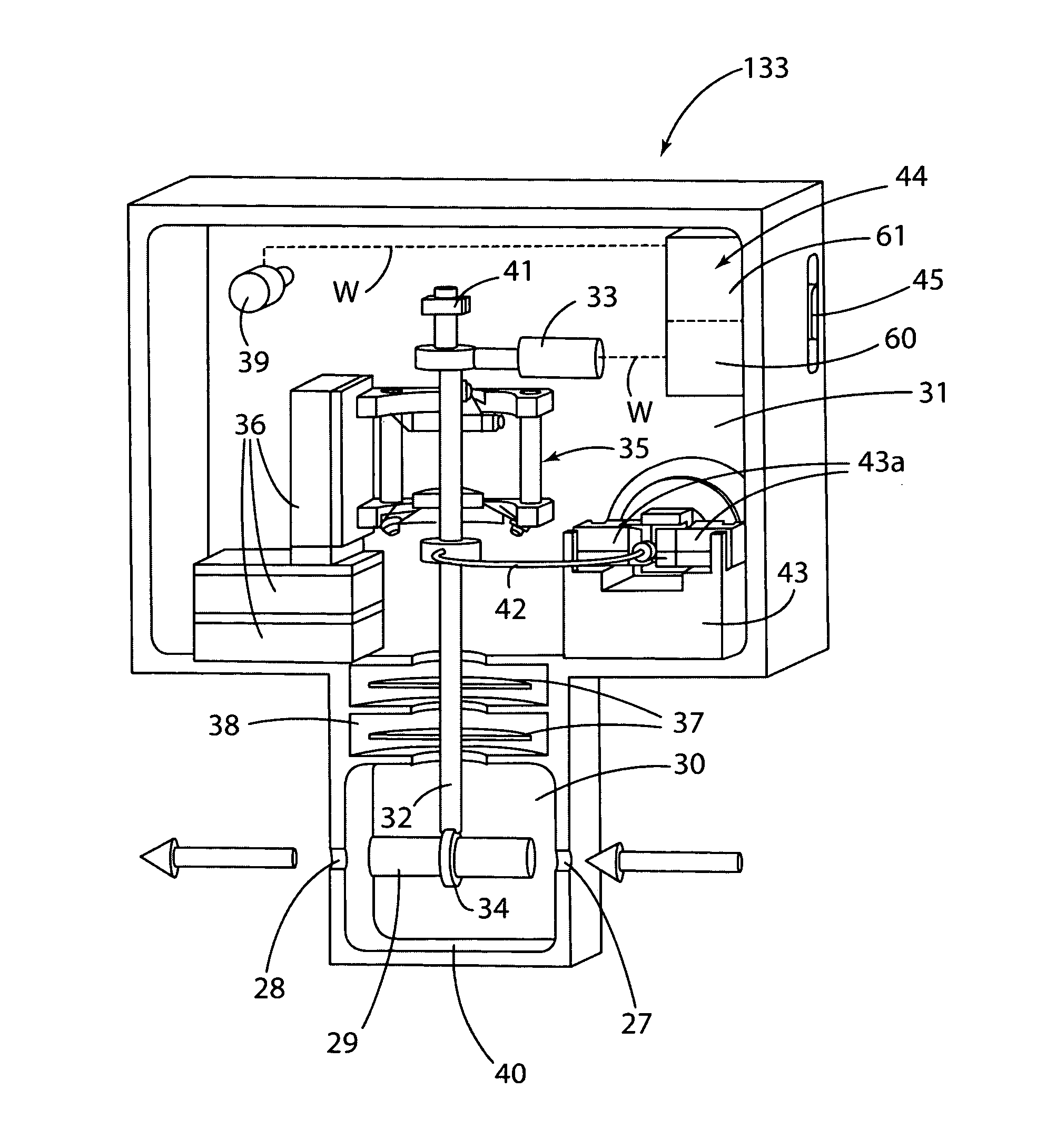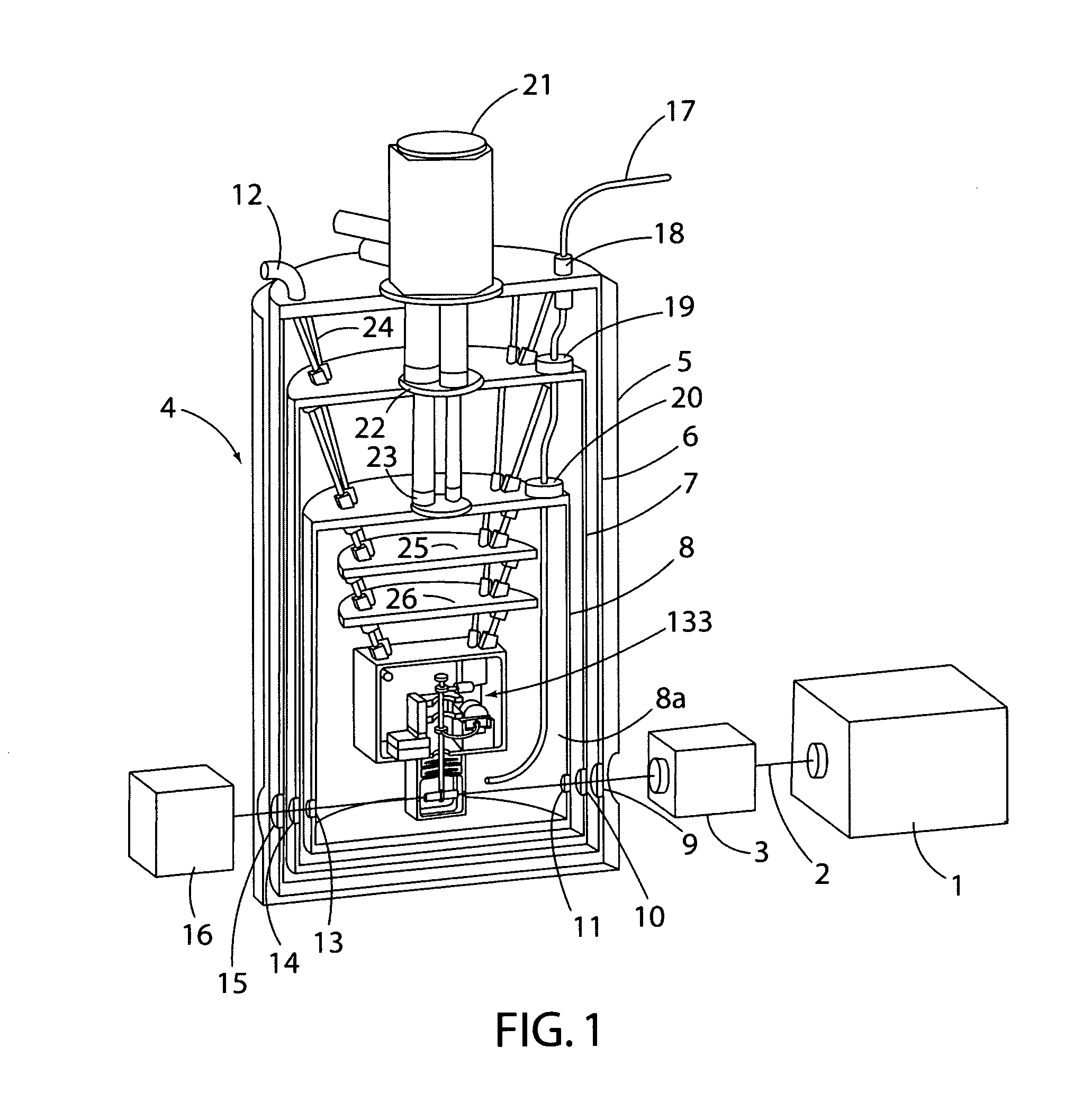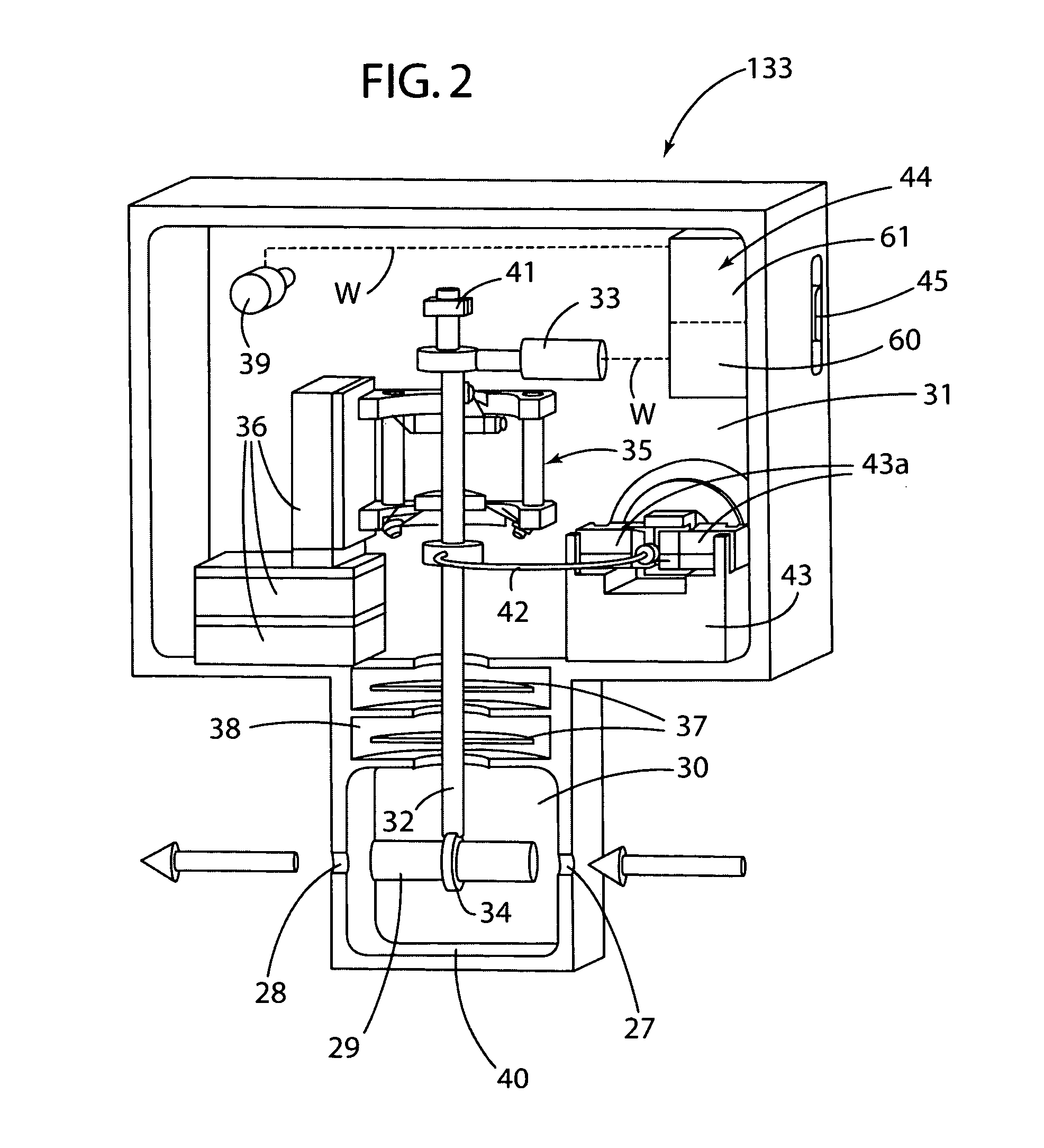Optical absorption meter
a technology of optical absorption and optical absorption meter, which is applied in the field of optical absorption calorimetry, can solve the problems of affecting the absorption efficiency of optical absorption, so as to improve the absorption sensitivity, reduce the sample heat capacity, and improve the effect of absorption sensitivity
- Summary
- Abstract
- Description
- Claims
- Application Information
AI Technical Summary
Benefits of technology
Problems solved by technology
Method used
Image
Examples
Embodiment Construction
[0038]FIG. 1. shows the preferred embodiment of the present invention using a commercial mechanical refrigerator 21 as a source of refrigeration and windows as the principal means for the entry and exit of the beam of electromagnetic energy. No additional refrigeration stages are included in this simple cryostat, so the minimum temperature in the system is simply what the mechanical refrigerator can provide. The mechanical refrigerator 21 shown is a Cryomech PT-405, which is attached to a compressor (not shown) via two flexible metal hoses (also not shown). This refrigerator can achieve a base temperature below 3K.
[0039]The optical path is first described, referring to FIG. 1. Optical excitation sources include commercially available spectral lamp, pulsed or cw (continuous wave) laser, and white light laser. The excitation source 1 creates the excitation beam 2 of electromagnetic energy which passes through any required optical processing such as a monochromator 3 before entering th...
PUM
 Login to View More
Login to View More Abstract
Description
Claims
Application Information
 Login to View More
Login to View More - R&D
- Intellectual Property
- Life Sciences
- Materials
- Tech Scout
- Unparalleled Data Quality
- Higher Quality Content
- 60% Fewer Hallucinations
Browse by: Latest US Patents, China's latest patents, Technical Efficacy Thesaurus, Application Domain, Technology Topic, Popular Technical Reports.
© 2025 PatSnap. All rights reserved.Legal|Privacy policy|Modern Slavery Act Transparency Statement|Sitemap|About US| Contact US: help@patsnap.com



